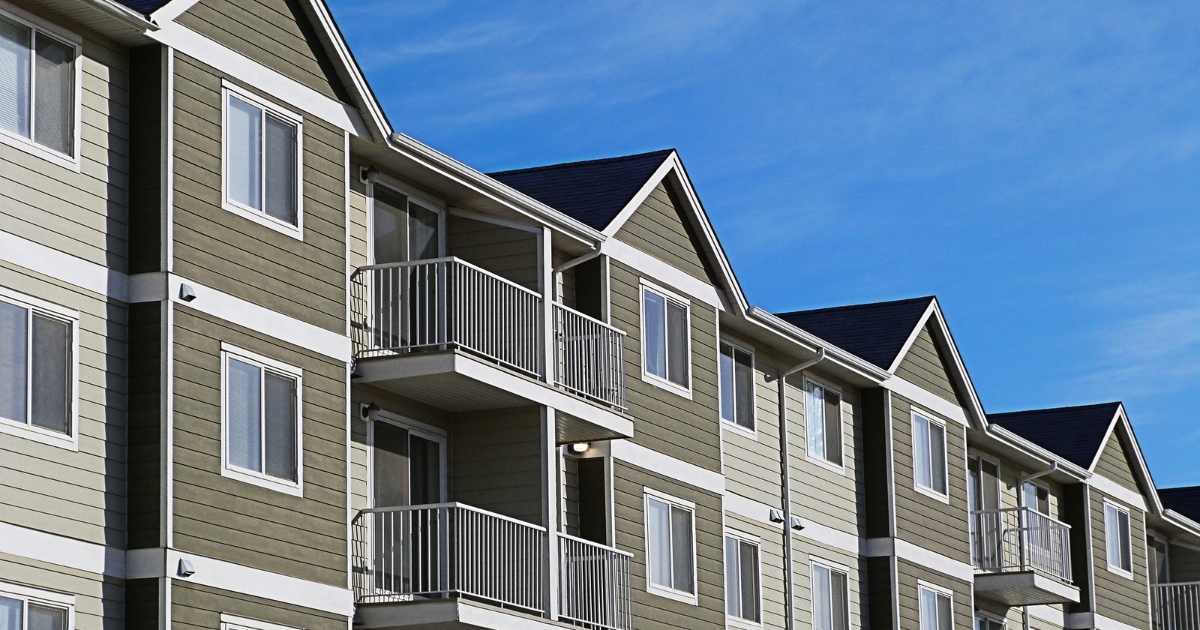Faltering Demand in Middle Price Tiers
A more detailed analysis of multifamily performance in the first quarter will be the subject of the forthcoming ALN newsletter for April. In broad strokes, new supply continued its surge, apartment demand cooled, and rent growth picked up. One area below the national level in which some clear differences emerged was price class performance.
All numbers will refer to conventional properties of at least fifty units.
Background Context for Apartment Demand
After bottoming out in 2022 following its historic peak in 2021, national multifamily absorption has been on a slow but steady upward trajectory. Due to the volatility of the last handful of years, pre-pandemic net absorption totals continue to represent a useful baseline. This is particularly true if net absorbed units are adjusted for multifamily stock given the massive new supply during that period.
The shortfall in net absorption in recent years relative to the 2018 and 2019 period was most pronounced in the Class C and Class D subsets. An encouraging aspect of 2024 industry performance was the broad improvement in apartment demand across price classes. Class A and Class B fully recovered to their pre-pandemic levels. Class C and Class D did not, but each took a significant step in the right direction for a second consecutive year.
The year is young, but the opening quarter of 2025 featured a stark shift in that dynamic.
Class A and Class D Net Absorption Encouraging
Class A managed a robust start to the year. Net absorption of approximately 18,000 units was the best result for the opening quarter in three years. In addition to the solid net absorption, average effective rent for new leases rose 2.4% in the period for Class A properties. That gain was only slightly below the Q1 2022 mark and was otherwise the highest in more than five years.
The Class D tier also started 2025 on the right foot. Net absorption of almost 12,000 units was the best result for this portion of the calendar in more than five years. The previous highwater mark for that five-year period was about 8,000 new absorbed units in the opening quarter of 2021.
However, whereas the Class A tier managed strong demand alongside strong rent growth, Class D suffered a decline in average effective rent of 0.3%. Nevertheless, for a segment of the industry that has struggled the most on the demand front over the last three years – the first quarter was very encouraging.
Middle Price Tiers Struggled
The step backward came in the middle price tiers. The Class B price class managed net absorption of only about 4,600 units in the first three months of the year. That was the worst opening quarter result in recent years by a wide margin and represented a nearly 80% decline from last year.
Despite this collapse in demand, the average effective rent rose by 1.5% in the period. Like Class A, this was lower than in the same portion of 2022 but significantly higher than the five-year average for the quarter.
For the first time in years, the Class C price tier suffered a net loss of leased units in the first quarter. The decline totaled around 4,700 units after a net gain of more than 15,000 leased units in the same portion of 2024. Here too, rent growth was notably higher than last year. A 0.7% gain more than doubled last year’s total and was the highest since 2022.
Marked Volatility in Monthly Data
The monthly data has been especially volatile. This is typical both of monthly data and of the first quarter, so too much should not be taken from this volatility. Even so, it is worth mentioning. All four price classes followed roughly the same pattern in apartment demand. Net absorption was negative in January, followed by a surge in February and then a retreat in March.
Class A net absorption was the most resilient in March relative to the February total. For both Class B and Class C, the month-over-month change from February to March was a decline of more than 80%. For Class C, a huge February was followed by a net loss of more than 6,000 leased units in March.
To reiterate, both the time of year and the nature of monthly data contribute to this volatility. However, the whipsaw nature of apartment demand in the opening months of the year has been at a scale not seen in recent years and presents a red flag relative to expectations as 2025 unfolds.
Takeaways
The price class demand dynamic that had been in place for the last three years has shifted so far in 2025. In recent years, Class A and Class B net absorption was relatively healthy while the bottom two tiers struggled. So far this year, the top and bottom of the market have outperformed while Class B and Class C have stumbled.
Despite these inconsistencies in demand, rent growth rose year-over-year nearly across the board. Only Class D saw rent performance soften relative to last year, but that development came with much improved apartment demand.
The unusual volatility month-over-month to open 2025 could be an early indication of apartment demand falling short of expectations this year. That would be especially worrisome given the quantity of new supply set to enter the market this year. However, the next couple of months should provide more clarity.
Disclaimer: All content and information within this article is for informational purposes only. ALN Apartment Data makes no representation as to the accuracy or completeness of any information in this or any other article posted on this site or found by following any link on this site. The owner will not be held liable for any losses, injuries, or damages from the display or use of this information. All content and information in this article may be shared provided a link to the article or website is included in the shared content.
Stay Ahead of Market Trends
Get exclusive insights on multifamily performance with our free Market Reviews—delivered straight to your inbox. Sign up today!

